Alexandre Denis
LORIA
Do Convolutional Networks need to be Deep for Text Classification ?
Jul 13, 2017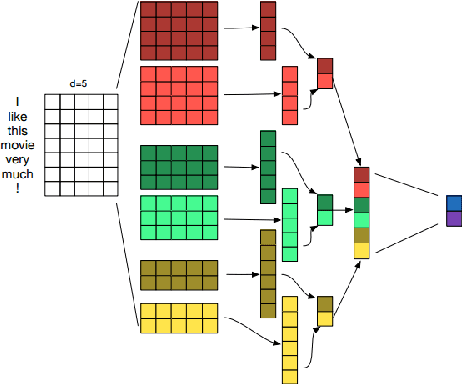
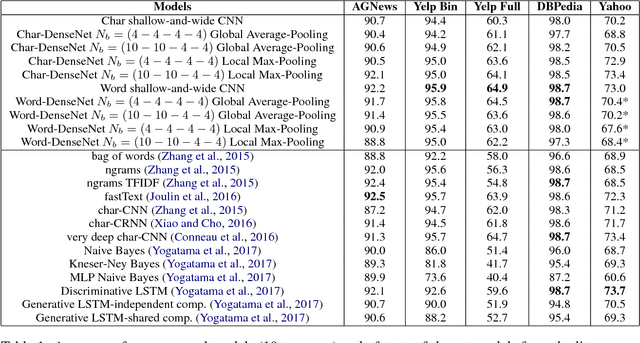

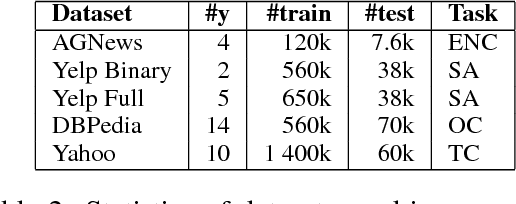
Abstract:We study in this work the importance of depth in convolutional models for text classification, either when character or word inputs are considered. We show on 5 standard text classification and sentiment analysis tasks that deep models indeed give better performances than shallow networks when the text input is represented as a sequence of characters. However, a simple shallow-and-wide network outperforms deep models such as DenseNet with word inputs. Our shallow word model further establishes new state-of-the-art performances on two datasets: Yelp Binary (95.9\%) and Yelp Full (64.9\%).
General Purpose Textual Sentiment Analysis and Emotion Detection Tools
Sep 11, 2013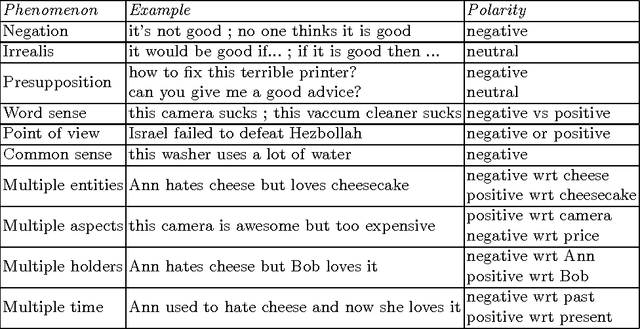
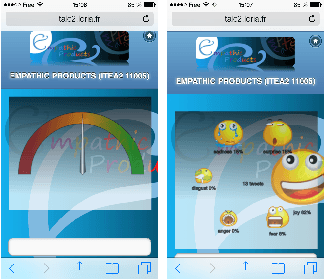
Abstract:Textual sentiment analysis and emotion detection consists in retrieving the sentiment or emotion carried by a text or document. This task can be useful in many domains: opinion mining, prediction, feedbacks, etc. However, building a general purpose tool for doing sentiment analysis and emotion detection raises a number of issues, theoretical issues like the dependence to the domain or to the language but also pratical issues like the emotion representation for interoperability. In this paper we present our sentiment/emotion analysis tools, the way we propose to circumvent the di culties and the applications they are used for.
Multimodal Meaning Representation for Generic Dialogue Systems Architectures
Mar 16, 2007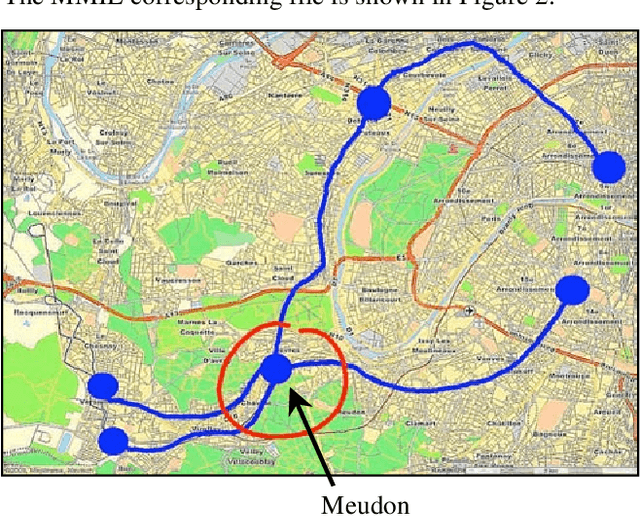
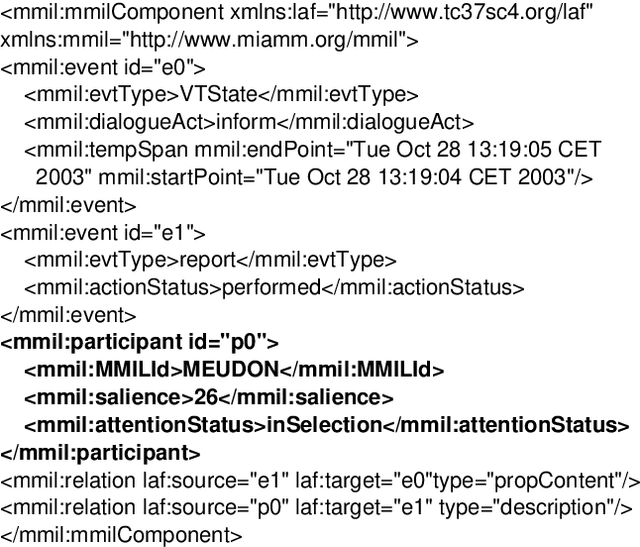
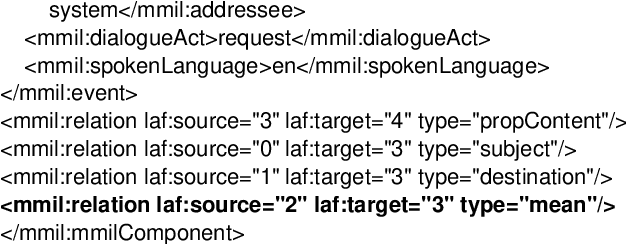
Abstract:An unified language for the communicative acts between agents is essential for the design of multi-agents architectures. Whatever the type of interaction (linguistic, multimodal, including particular aspects such as force feedback), whatever the type of application (command dialogue, request dialogue, database querying), the concepts are common and we need a generic meta-model. In order to tend towards task-independent systems, we need to clarify the modules parameterization procedures. In this paper, we focus on the characteristics of a meta-model designed to represent meaning in linguistic and multimodal applications. This meta-model is called MMIL for MultiModal Interface Language, and has first been specified in the framework of the IST MIAMM European project. What we want to test here is how relevant is MMIL for a completely different context (a different task, a different interaction type, a different linguistic domain). We detail the exploitation of MMIL in the framework of the IST OZONE European project, and we draw the conclusions on the role of MMIL in the parameterization of task-independent dialogue managers.
 Add to Chrome
Add to Chrome Add to Firefox
Add to Firefox Add to Edge
Add to Edge